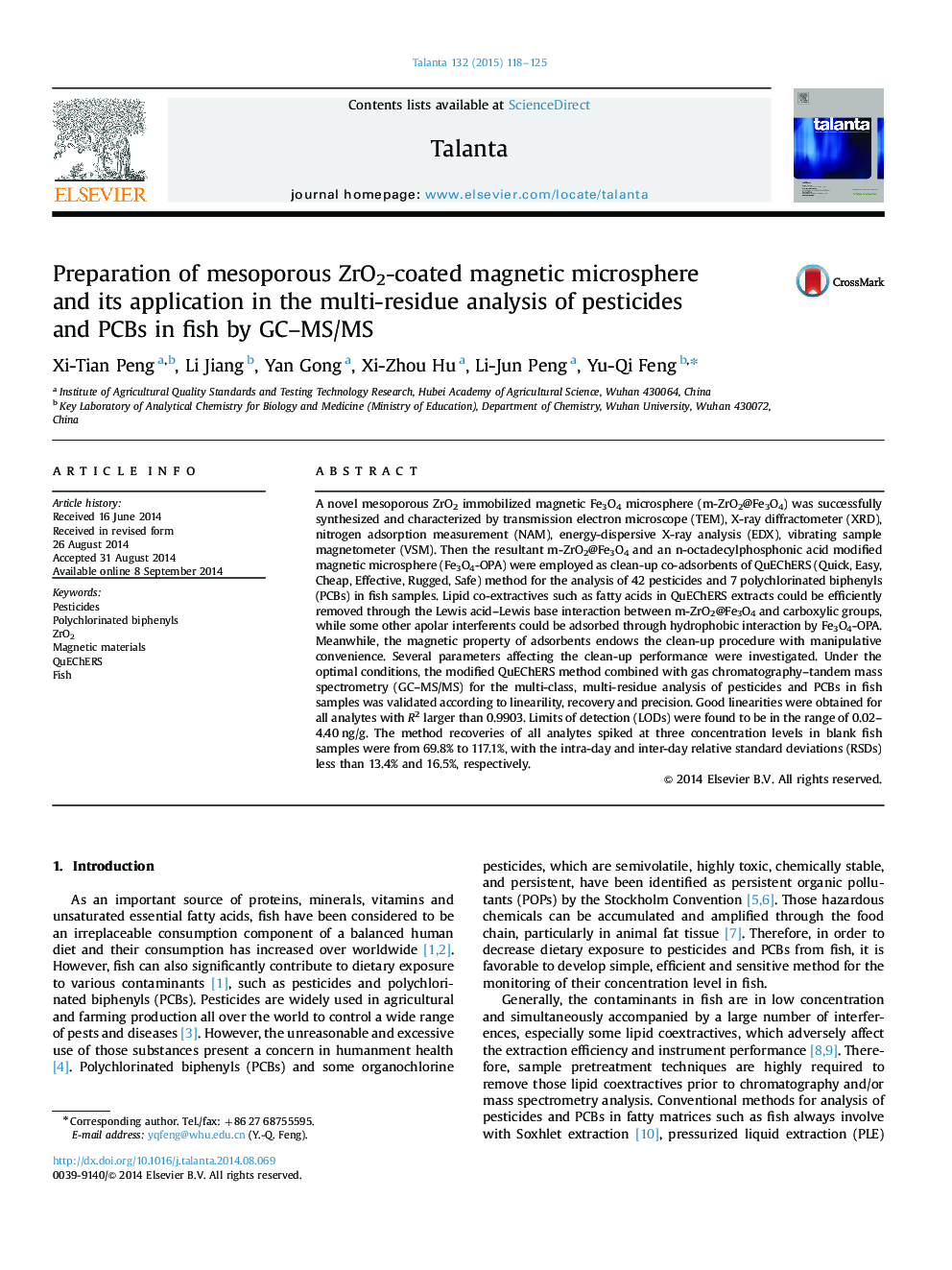| Article ID | Journal | Published Year | Pages | File Type |
|---|---|---|---|---|
| 1241996 | Talanta | 2015 | 8 Pages |
•A mesoporous ZrO2 immobilized magnetic Fe3O4 (m-ZrO2@Fe3O4) was prepared.•m-ZrO2@Fe3O4 and Fe3O4-OPA were used as cleanup co-adsorbents of the QuEChERS method.•Fatty acids in extracts were removed through the Lewis acid–Lewis base interaction.•The modified QuEChERS method was coupled with GC–MS/MS.•A method for determianation of 42 pesticides and 7 PCBs in fish was established.
A novel mesoporous ZrO2 immobilized magnetic Fe3O4 microsphere (m-ZrO2@Fe3O4) was successfully synthesized and characterized by transmission electron microscope (TEM), X-ray diffractometer (XRD), nitrogen adsorption measurement (NAM), energy-dispersive X-ray analysis (EDX), vibrating sample magnetometer (VSM). Then the resultant m-ZrO2@Fe3O4 and an n-octadecylphosphonic acid modified magnetic microsphere (Fe3O4-OPA) were employed as clean-up co-adsorbents of QuEChERS (Quick, Easy, Cheap, Effective, Rugged, Safe) method for the analysis of 42 pesticides and 7 polychlorinated biphenyls (PCBs) in fish samples. Lipid co-extractives such as fatty acids in QuEChERS extracts could be efficiently removed through the Lewis acid–Lewis base interaction between m-ZrO2@Fe3O4 and carboxylic groups, while some other apolar interferents could be adsorbed through hydrophobic interaction by Fe3O4-OPA. Meanwhile, the magnetic property of adsorbents endows the clean-up procedure with manipulative convenience. Several parameters affecting the clean-up performance were investigated. Under the optimal conditions, the modified QuEChERS method combined with gas chromatography–tandem mass spectrometry (GC–MS/MS) for the multi-class, multi-residue analysis of pesticides and PCBs in fish samples was validated according to linearility, recovery and precision. Good linearities were obtained for all analytes with R2 larger than 0.9903. Limits of detection (LODs) were found to be in the range of 0.02–4.40 ng/g. The method recoveries of all analytes spiked at three concentration levels in blank fish samples were from 69.8% to 117.1%, with the intra-day and inter-day relative standard deviations (RSDs) less than 13.4% and 16.5%, respectively.
Graphical abstractFigure optionsDownload full-size imageDownload as PowerPoint slide
